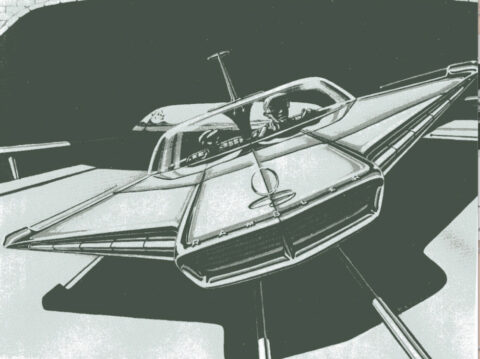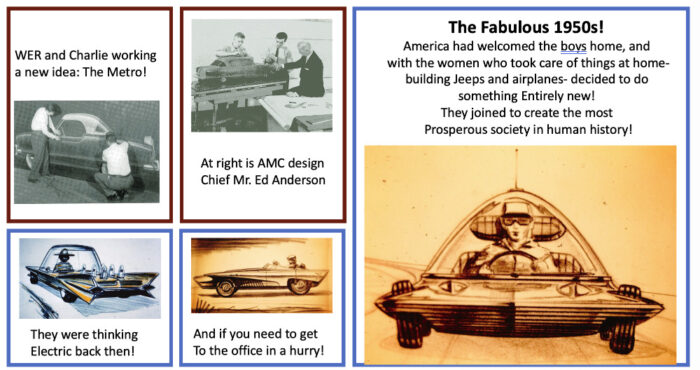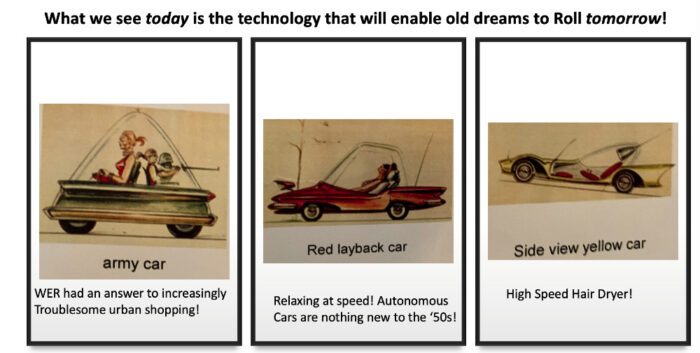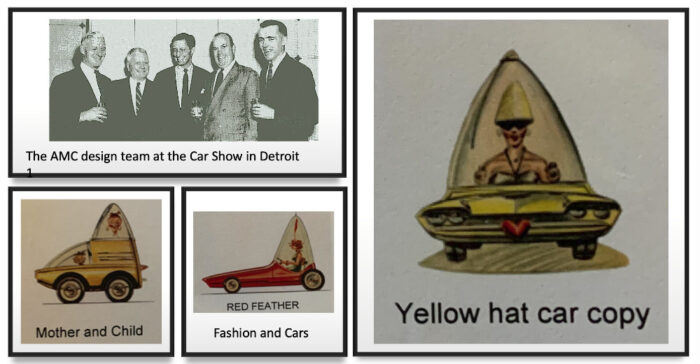The Fabulous Fifties

(This is one of the rail cars WER Designed. That is clearly his image behind the wheel, and we have a pretty good idea who the kid might be!)
We could launch on a Twitter-rama tale this morning, but the idea that in America, land of the free, we now have a government that….oh hell. We will either fix the problem as we normally have, through debate and fair voting or we have all lost something in the victory of the Cold War. Rather than beat that tired old horse, we thought we would look back on one of the most invigorating times in modern history. We are used to a full ration of “disaster is almost upon us!” emanating from our flat screens, and before that from televisions with big tubes.
We took a poll at Big Pink about who could remember when things changed from boundless optimism about the future to “The Ice Age is returning!” That was the tune for about a decade after the first Earth Day in 1970. Then it was about the Horrific Warming that was about to happen for another twenty years. Until the snow got too deep this winter and it was “just changing.” To solve all our climate problems, we have been assured that a few minor adjustments to our lifestyles is necessary. Electric automobiles is one of them, along with light fast rail cars. But we thought about all these a while ago.
Accordingly, we thought we would trot out these designs below. They predate the coming Ice and Fire terrors. We thought it might be good to take a little journey in time, back to when our parents were young. A sign of those times? WER taught his wife Betty how to drive, empowering her in a way that showed how things were going to change. They had just accomplished something quite remarkable. They defeated militarists on the global stage, and in the flush of their success built something we can only call “fabulous.” In the 1950s some of us remember! Here is just some of it, ‘found in the files!’

We could call this episode “Finding the Files.” The Old Salts naturally got a kick out of the portraits Bill (W.E.R.) did while in uniform during the horrific days of World War Two. We had never seen some of them, and in addition to killing some time back then, they provide a record of how the kids who were called to serve spent their time. What was new to all of us were the insights of the times.
WER returned to the New Jersey hills overlooking the lights of Manhattan when the Navy was done with him. He used his GI Bill to go to school at Pratt Institute. He wanted to learn a formal trade in which to harness his talent for drawing. There was a new skilled trade rising in the surge of consumer demand that followed the various privations of conflict times. “Industrial Design” is what they called it. But it was something more. Like ours, their society had changed. Women had demonstrated the ability to do anything the nation needed. In the 1950s, the industrial designers began to consider what half the population might want to see included in the basic social toolset.

WER and his lovely wife Betty took off from New York in an old Model A Ford for the drive to Detroit in 1948. They lived in a little house in Ferndale on the Woodward Avenue corridor that runs northwest from the Motor City civic area. WER started at Ford as a designer. One of the early projects was the ‘Ford Levicar,’ a vehicle that moved by power from an air pump. He spent a couple years with Ford, but his talent was recognized by George Romney, who as determined to build the Rambler car line into something new. Practical and affordable cars that would be purchased and used by the women whose role had changed as dramatically as that of the young men drafted for combat. With the men gone overseas, the old categories of labor based on sex had to go away. The women had picked up the slack, and demonstrated they could do whatever was necessary to keep the machines running to victory.
Accordingly, WER took a look at his bride for some insight. Her energy got her to Manhattan from a little Ohio River town. She was first in her Irish family to attend college. After marriage, she was a secretary at Ford’s (we always heard it that way, as if Henry was personally running his car company) as well as she managed the household and bore three kids. Women could do anything they needed to, proven fact. And WER started to create designs that incorporated what the boys thought was a little feminine whimsy to the swooping exciting lines of the automobiles George wanted to produce at American Motors.
Later, he got a chance to design appliances that would appeal to everyone. But that was in the Slightly Sideways Sixties. That will have to wait!

Copyright 2022 Vic Socotra
www.vicsocotra.com
